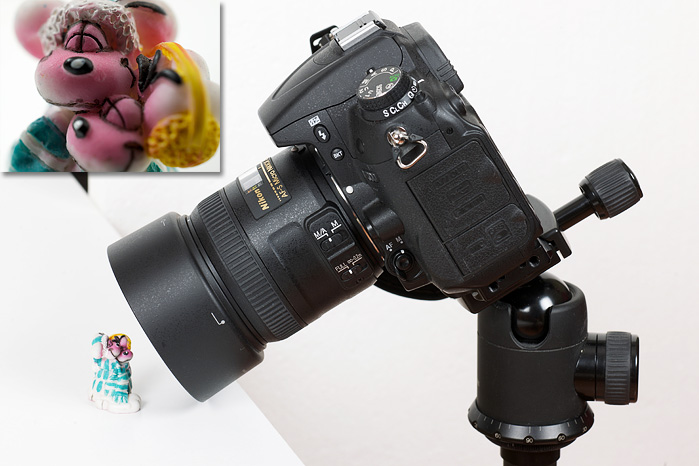|
Page 1 of 3

Review by Markus Stamm, published September 2011
Introduction
They did it again: for the second time in 2011 Nikon announced a lens that hardly anyone expected and for the second time in a row this included the rumor sites, too. Just like the AF-S 50/1.8G earlier this year, the new Micro Nikkor AF-S DX 40mm f/2.8 G came out of nowhere.
Nikon already had a quite complete and certainly attractive line-up of macro lenses. The DX 40 closes a gap that so far widely wasn't perceived as such. However, short macro lenses have been selling well for many decades and for good reasons: they are usually compact, light-weight, affordable and for many work well as an everyday normal prime, too. The new Micro Nikkor now delivers all that in a dedicated DX lens.
In this review we will have a look at how the lens performs on our current DX test camera, the Nikon D7000.

The build quality of the lens is very decent thanks to an outer barrel made out of high quality plastics based on a metal mount.
The rubberized focus ring is slightly damped and operates reasonably smoothly. Unfortunately the focus ring shows an issue that we have seen in several recent AF-S lenses: there's a little play when changing the focus direction in manual focus mode, that can be annoying during focus fine tuning (for example in magnified Live View mode).
The front element does not rotate so using a polarizer remains easily possible.

The lens tube extends when focusing towards closer distances. In fact there are two tubes at work, the front lens is deeply recessed at the infinity setting and moves forward to the frontmost edge of the lens tube for macro settings.
Being an AF-S lens the DX 40 is compatible with all current Nikon DSLRs, including the motor-free entry-level cameras. There's manual override at all times and silent operation but the AF speed is not overly fast, slower than other AF-S Micro Nikkor lenses. It's certainly fast enough for the everyday usage, however. The lens features a switch to limit the focus range from infinity to 20 cm. That may not sound like a huge gain, since the minimum focus distance of the lens is 16.3 cm, but it cuts the focus travel path in half.
Under the hood
A dedicated hood is included with the lens. For non-macro usage the hood is not really needed because of the recessed front element. For macro shots things look different and the hood certainly helps to prevent side light from hitting the front lens. In case the light is coming from behind the photographer, however, the hood easily casts a shadow on the intended subject, especially at large magnifications due to the rather short working distance. The issue is illustrated in the image below, which is still far from 1:1.

Even with soft ambient light, lighting the subject can be really difficult when working close to the minimum focus distance. Due to the extending inner lens tube, the working distance at maximum magnification is just above 3 cm (front lens to subject, even less when taking the hood into account, too). As can be seen below, the photographed subject is darkened considerably compared to the background.

Typical for any modern Nikkor the AF-S DX 40/2.8 is a G-type lens and thus does not offer an aperture ring.
| Specifications |
|---|
| Equiv. focal length | 60 mm (full format equivalent) |
| Equiv. aperture | f/4.2 (full format equivalent, in terms of depth-of-field) |
| Optical construction | 9 elements in 7 groups |
| Number of aperture blades | 7 (rounded) |
| min. focus distance | 0.163 m (max. magnification ratio 1:1) |
| Dimensions | 68.5 x 64.5 mm |
| Weight | 235 g |
| Filter size | 52 mm (non-rotating) |
| Hood | Nikon HB-61, barrel shaped, bayonet mount (supplied) |
| Other features | Lens provides distance (D) information to the camera, Silent Wave AF motor |
|